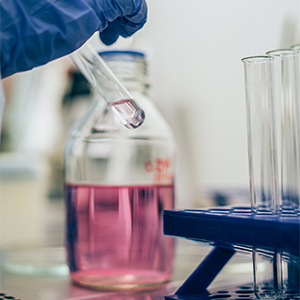With the development of science, laboratory instruments of all kinds are becoming more and more sophisticated, and the requirements for the reagents and water used in the testing process are becoming higher and higher. In particular, laboratory water, which is not used anywhere in the experimental process, is even more important. So, how much do you know about laboratory water?

Grading of laboratory water
According to GB/T 6682-2008 “Specifications and Test Methods for Analytical Laboratory Water,” the raw water for analytical laboratory water should be drinking water or water of appropriate purity. The water used in laboratories is divided into Class I, Class II, and Class III.
Class I water is used for analytical experiments with stringent requirements, including those requiring particulates, such as for high performance liquid chromatography. Primary water can be made from secondary water by distilling it through a quartz apparatus or ion exchange mixing window and filtering it through a 0.2 nm microporous membrane.
Secondary water is used for inorganic trace analysis and other experiments, such as atomic absorption spectroscopy of human system water. Secondary water can be made by multiple distillations or ion exchange.
Tertiary water is used for general chemical analysis tests. Tertiary water can be produced by distillation or ion exchange.
The most common types of water used in laboratories
1, distilled water (Distilled Water) distilled water is one of the most commonly used pure water in the laboratory. Distilled water can remove most contaminants from tap water. Still, it cannot remove volatile impurities such as silica, ammonia, carbon dioxide, and some organic substances. Fresh distilled water is sterile, but bacteria can easily multiply after storage, so it is recommended not to be stored for long periods. It is also important to store distilled water in containers not made of inert materials. Otherwise, ions and plastic substances in the container can precipitate out, cause secondary contamination of the distilled water, and make it unusable. In the early days of the laboratory, distilled water was more widely used because it was easy to prepare. But distilled water equipment, although cheap equipment, but extremely energy-intensive, water and slow water production speed, and laboratory applications have gradually decreased in recent years.
2, Deionised water (Deionised Water)
Deionized water is obtained using ion exchange resins to remove anions and cations from water. Deionized water still exists in soluble organic matter, which can contaminate the ion exchange column to reduce its effectiveness and affect water quality. As with distilled water, deionized water is prone to bacterial growth after storage, so it is important to take it and use it first to reduce storage time.

3, Reverse osmosis water (Reverse osmosis water) reverse osmosis water is an increasingly widespread laboratory application of laboratory water. The principle of reverse osmosis water generation is that water molecules, under pressure, through the reverse osmosis membrane, produce pure water and impurities in the water by the reverse osmosis membrane retention and discharge. The process of producing reverse osmosis water is low in energy consumption, fast in water production, safe, and a purely physical process with no chemical reactions. As a result, this economical, practical, safe and efficient way of producing water is now being used in more and more laboratories. Reverse osmosis water can effectively remove impurities such as dissolved salts, viruses, bacteria, colloids, bacterial endotoxins, and most organic matter from water, overcoming many of the drawbacks of distilled and deionized water. The desalination rate of a good reverse osmosis membrane can reach approximately 99%. Still, the quality of reverse osmosis water is greatly influenced by the different manufacturers of reverse osmosis membranes. Because of its high purity, Reverse osmosis water is susceptible to secondary air contamination. Because of the high storage requirements, try not to store it in air exposure for a long time.
4, Ultra-pure water (Ultra-pure grade water) The standard for ultra-pure water is water with a resistivity of 18.2MΩ.cm (25°C) (please note that the water we are talking about is all in the ideal environment of 25 degrees). Ultrapure water, apart from water, with an ionic content close to none, is a strong oxidizing agent and is extremely susceptible to secondary contamination by air. Even if stored, the resistivity drops very quickly. Because in the laboratory, we recommend that ultrapure water is taken now and used to ensure the accuracy of experiments. Ultrapure water is not the same in terms of TOC, bacteria, endotoxin, and other indicators because of the requirements of various experiments. Therefore, it is necessary to determine, according to the experiment’s requirements, the relevant ultrapure water standards.
The following are several common indicators to evaluate the quality of ultrapure water:
A, resistivity (electrical resistivity), ultrapure water resistivity in MΩ/cm (25 ℃), is a measure of the conductivity of laboratory water indicators.
Ultra-pure water resistivity with the reduction of inorganic ions within the water and resistance increases, resistivity and conductivity into an inverse relationship.
The standard for laboratory ultrapure water: water resistivity is 18.25MΩ.cm (25℃).
B, TOC total organic carbon (Total Organic Carbon), TOC is the concentration of carbon in ultrapure water, the unit for ppm or ppb can reflect the content of oxidized organic compounds in the water. The impact of some organic experiments is greater.
C, endotoxin (Endotoxin), endotoxin, also known as “pyrogen,” mainly Gram-negative bacteria, lipopolysaccharide cell wall fragments, the unit CFU/EU, remove endotoxin ultrapure water is mainly used in the life sciences.

Post time: Jan-26-2023





